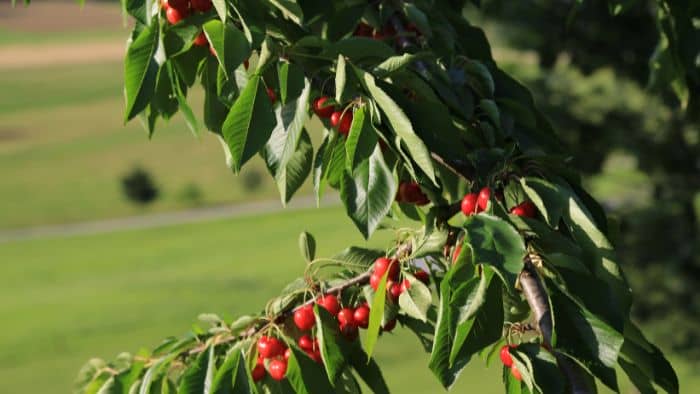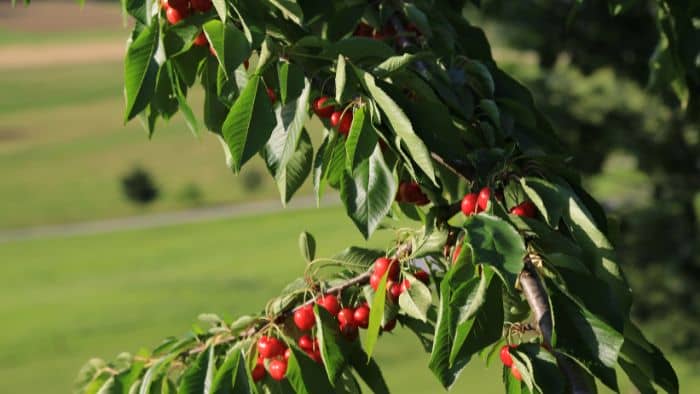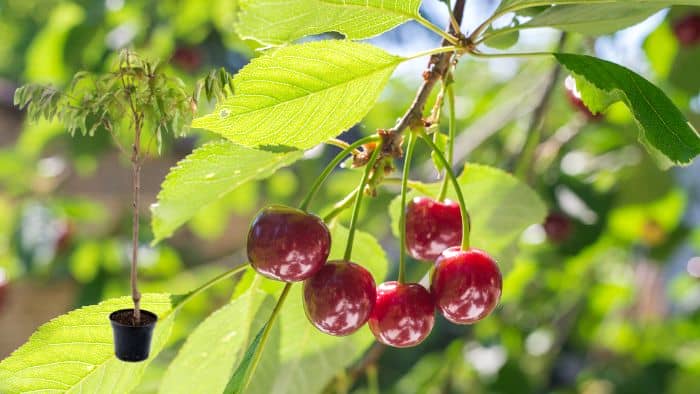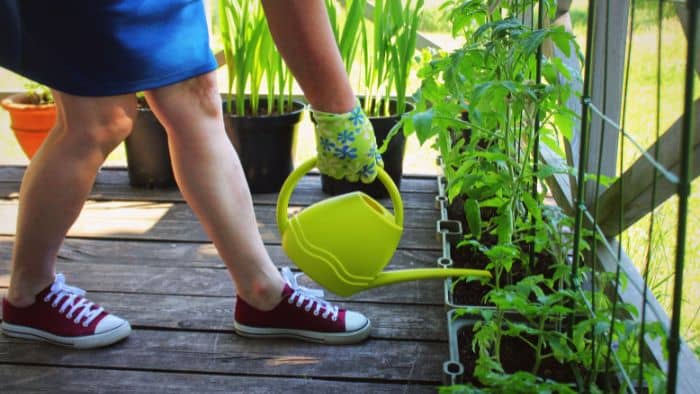In this blog post, we discuss the Best Soil for Cherry Trees, their growing demands and preferences, and much more! These plants grow best when exposed to full sunlight for at least eight hours daily. They also require fertile, well-drained soil to thrive. Their fruit output and quality depend heavily on light, which also protects them and prevents the growth of fungi.
The optimal times to plant cherry trees are in the spring and fall seasons. With the right growing environment, maintenance, and care, these trees typically begin producing fruit in their fourth year. However, if you’re deciding to grow one of the dwarf varieties, fruit-bearing may take a little while longer.
Did you know that a mature tree of average size will yield around 30 to 50 quarts of cherries annually? Well, that quantity is entirely dependent on several aspects that can enhance or flaw their development. For abundant harvests, have a look at the tips below to grow thriving fruit plants.
How To Plant A Cherry Tree
When planting, it is recommended that you use the best soil to aid them in reaching their optimal growth potential. Whether you choose to plant standard or dwarf trees, the harvesting results will depend on the environment they are grown in. This includes the type of growing medium used, the watering schedules, light requirements, and fertilization amongst others.
Keep in mind that at least two to three trees are required for pollination. There is also a self-pollinating dwarf sweet cherry tree that you can opt for. Many of them are hermaphroditic, meaning that both male and female reproductive organs can be found in their blossoms. Other species can be distinguished by the color of their flowers.

Here Are A Few Tips To Follow When Planting Them:
1. Requirements – Cherries require a lot of room, good airflow, and regular watering to grow and thrive. Individual cherry cultivars have different climate requirements.
2. Area – USDA zones 5 through 9 are ideal for cultivating these fruit plants.
3. Location – Cherry trees need full sun, clean air, and plenty of room to grow their best.
4. Spacing – If you’re planting multiple trees, ensure that you allow for 30 to 40 feet between each one.
5. Soil – The ideal soil types should contain light sand and excellent drainage properties. It should also be slightly acidic as these plants prefer it. Keep in mind that cherry trees are susceptible to root and crown rot in heavier soils that have a propensity to stay wet.
6. Planting – Dig a hole that is slightly larger than the root ball of the plant. Then, place your plant a few inches below the soil’s surface. Spread the free roots evenly into the planting hole if you have a bare-root tree. A small portion of the root ball should be visible above the ground when you fill the hole with soil. Push it down gently after adding the growing medium.
7. Watering – Your cherry tree has to be watered daily when first planted. Thereafter, depending on the climate in your area, giving it a drink once or twice a week should be ideal. Remember that overwatering will damage your plant.
For a complete cherry tree growing guide, here’s a great video.
What is the Best Fertilizer for Cherry Trees
A great strategy to restore the nutrients in your soil, particularly nitrogen, and enhance plant growth is to use fertilizer. Before your cherry tree reaches its fruit-bearing stage, you want to foster green vegetative development, which nitrogen encourages. However, it is recommended to always perform a soil test before adding any soil amendments or enhancements.
The natural components required to promote tree growth and development can vary in quantity among different soils. If you find that any essential nutrients which include nitrogen, phosphates, or potash are missing, be sure to select a fertilizer that will make up for them.
For your plants to thrive, you have a choice of fertilizers that are synthetic or organic. The latter is much preferred as it is naturally derived. There are also organic soil additives like aged or rotted manure and compost that can be used in their place. Although they possess some of the same properties, they are fertilizers. You should remember that the effectiveness of the cherry tree’s health is due to potassium.
Therefore the best choice for them is a water-soluble fertilizer that is specifically developed for use on cherry trees. This is because they prefer a low-nitrogen fertilizer as they are light feeders.

Best Soil for Cherry Trees in Containers
Cherry trees grown in containers require a pot that is wider and deeper than their root ball. This is because they need ample space to expand. So, what is the best soil for cherry trees in containers?
Well, for them to grow their best a homemade cheery tree potting soil is best. Listed below are a few ingredients that you can mix together to form this organic-rich growing medium. Keep in mind that they are all easily available online or at local nurseries.
DIY potting soil mix includes:
Two parts light sand
Two parts perlite
Two parts peat moss
One part aged or well-rotted compost
One part sphagnum moss
Note: A drainage hole should be present in the container to ensure that your plant is not waterlogged. Ensure that you fill the planter with essential drainage materials like small rocks or pebbles. Mulch the topsoil after you’ve finished planting your cherry trees in pots to retain moisture.
What Are Cherry Tree Growing Conditions?
When growing fruit plants, patience is key as it will afford you abundant harvests. This is because the fruit-bearing stage with these trees can take up to four years if grown in ideal conditions.
Cherries are mature when they are deeply colored, firm, and slightly malleable. Depending on the variety, this may mean dark red, golden yellow, or black when fully grown. Remember to use pruning shears to cut off the ripened fruit by the stems during harvesting.

Here are a few growing conditions to take heed of:
- Ensure that the soil is wet but not soggy as this will avoid root decay.
- To stop bacterial spores from spreading, any branches that have been taken over by these invaders should be removed.
- It is important to mulch around the tree bases to prevent weed growth and maintain soil moisture.
- In addition to luring pollinators, companion planting can keep pests like aphids at bay so it is highly recommended when growing cherry trees.
- In the late winter season, pruning your tree is advised.
- Fertilizing your plant during the growing season will enhance its growth and provide them with the elements they need to thrive. You should also consider changing to a lighter fertilizer after harvest or as soon as the trees start to yield fruit.
- To shield the fruit from birds and insects, cover them with a thin net for protection.
Conclusion
Soil type is a crucial factor when growing fruit trees or any other plant for that matter. Although most high-quality commercial growing mediums will do; there’s still no guarantee that it is the best soil for cherry trees. This is because it can alter the amount of water the tree needs depending on its components and makeup.

Using the ideal mixture gives your plant the potential to yield a fantastic harvest. If you plan on growing your tree in a pot, then following our tips and recommendation above will be favorable. Ensure that you also use a pot that allows for sufficient drainage to protect your fruit tree roots.
Pots made of ceramic glaze or high-quality polyurethane are suitable options for growing cherry trees. Because they aren’t completely zone-hardy they are often planted in pots as they can be moved if the weather becomes unmanageable. Keep in mind that during the winter months, these plants usually experience a dormant stage. Here’s a link with more about growing these juicy fruit trees.

